
Judy at the Temple of Athena (goddess of wisdom and arts) - Greek temple (500 b.c.) Doric style. |
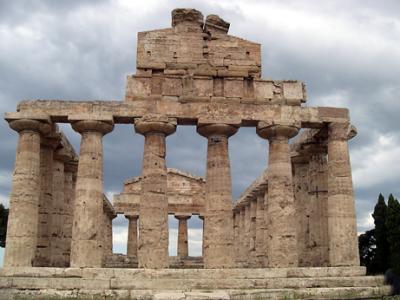
Temple of Athena (500 b.c.): Paestum was Greek in 6th c. b.c., Lucanian in 5th c. b.c. & then Roman in 3rd c. b.c. |
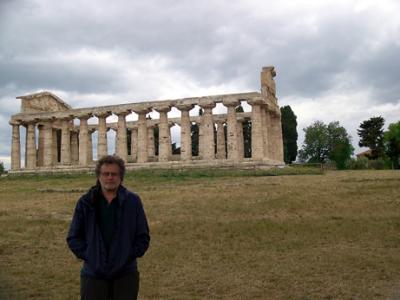
Richard at Temple of Athena (500 b.c.): Mislabeled Temple of Ceres (Roman god of agriculture). |
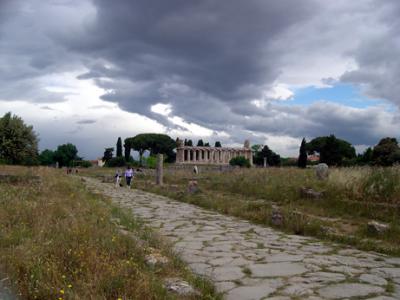
Temple of Athena & the Sacred Road (Greek origin). Romans paved much of this road with stones as seen here. |
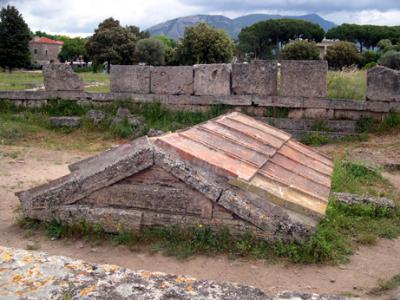
"Underground Shrine:" From 520- 510 b.c. Erected to honor a hero after death. Romans added the tile roof to collect rain water. |
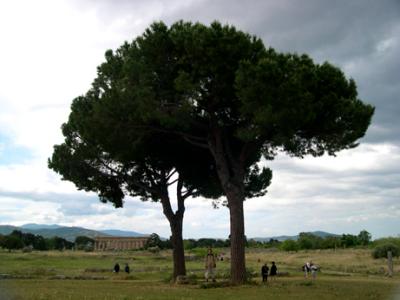
Judy under an umbrella pine with the Temple of Poseidon (Neptune) in the background. |
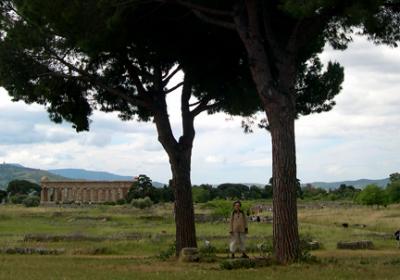
Judy under an umbrella pine with the Temple of Poseidon (Neptune) in the background. Crop from previous photo. |

Pool built in 3rd century b.c. by early Romans. Structure on far end served as a platform support. Used in religious rites. |
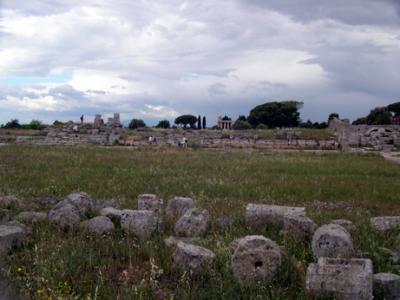
Forum (looking north): Roman (3rd c. b.c.) On top of Greek Agora (5th c. b.c.) Town center. Enclosed on 4 sides by a portico. |
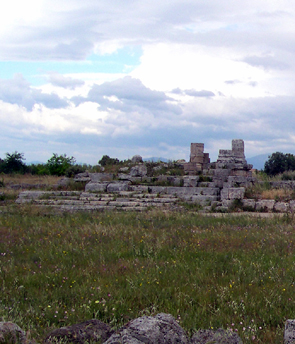
Italic Temple (Temple of Peace): Roman (2nd cent. b.c.). North side of Forum. Religious center. Crop from previous photo. |
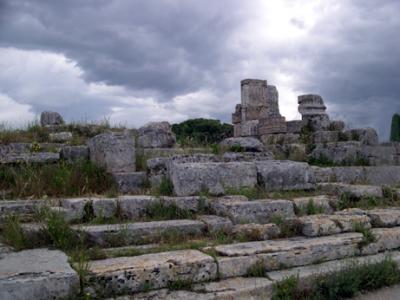
Italic Temple (Temple of Peace): Roman (2nd century b.c.). Raised platform - dominated area. Foreground - staircase. |

Southern portico of Forum (Roman 3rd century): Structures on the left were shops. Columns on right supported roof. |
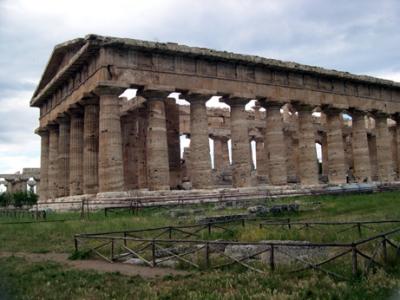
Temple of Poseidon (470-460 b.c) Greek sea god. (Roman - Neptune): Actually dedicated to Hera - wife and sister of Zeus. |
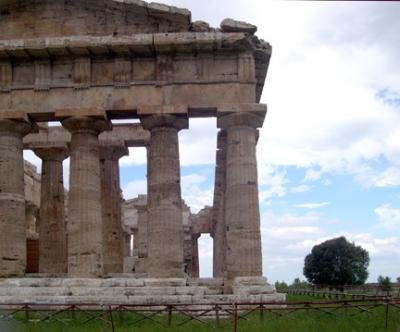
Temple of Poseidon (Greek 470-460 b.c.): Also called Temple of Hera II. Doric style. Most well preserved temple in Paestum. |
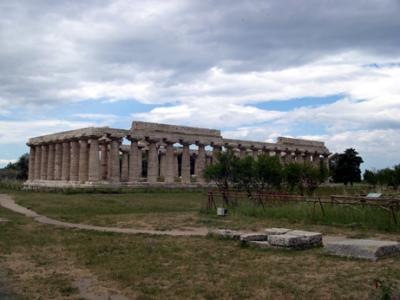
Temple of Hera I (Greek goddess of fertility) (Roman - Juno) (550 b.c.): Largest & oldest temple in Paestum. Doric style. |

Temple of Hera I: Columns swell in middle - sturdy look. Called, "Basilica" in error. It was not a Roman civil building. |

The Ekklesiasterion (480 b.c. - Greek): Meeting place (ekklesia - assembly) for male citizens involved in political matters. |
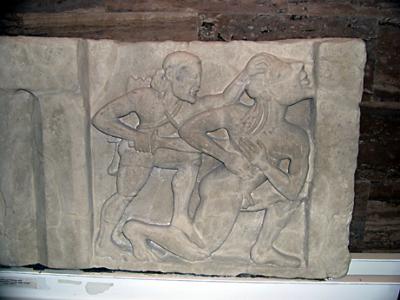
Heracles killing the giant Alcyoneus (6th cent. b.c. - Greek): Once decorated a sanctuary of the goddess Hera. |
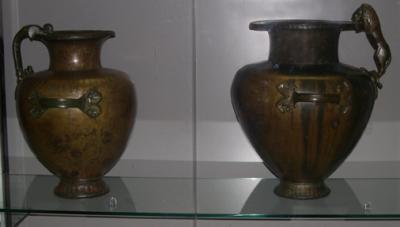
Greek bronze vases from the "Underground Shrine" (520-510 b.c.). Sealed with wax and had soft honey inside when found in 1954. |

Greek ceramic vase from the, "Underground Shrine" (520-510 b.c). Heracles arriving in Olympus - welcomed as a god among gods. |

Headless female bust (Greek - 500 b.c.): An architectural decoration. Greeks used the swastika as a symbol of the sun. |
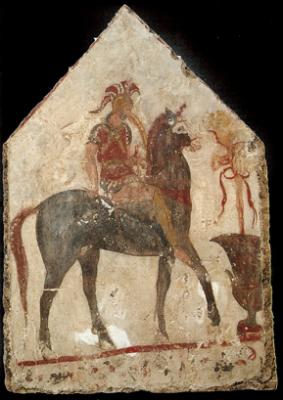
"Black Horseman:" From a Lucanian tomb (4th c. b.c.). Passing to the hereafter - sad, tired, alone & absorbed in thought. |
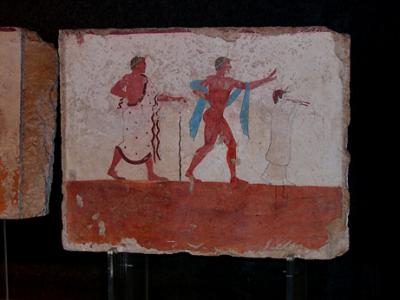
From the "Diver's Tomb:" (480 b.c.). Few Greek paintings exist from this period, except the ones taken from this tomb. |
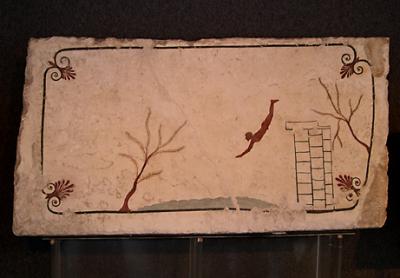
Inside cover from the "Diver's Tomb." (480 b.c): Famous Greek fresco painting. Symbolic - diving from this life to hereafter. |











